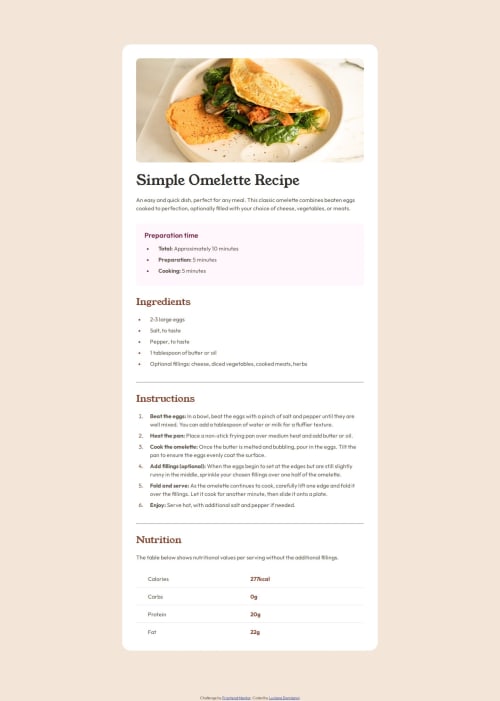Submitted about 1 year agoA solution to the Recipe page challenge
Recipe Page using HTML and CSS
@ldonnianni

Solution retrospective
What are you most proud of, and what would you do differently next time?
I am proud that I coud match the design. I would like to improve my workflow, naming conventions of the elements and to write a nice clean HTML and CSS.
What challenges did you encounter, and how did you overcome them?The most difficult part was to use the correct elements in the HTML that would make it more readable and easier to style in css. Not sure what can I improved.
What specific areas of your project would you like help with?I would like to know if the structure of the HTML is correct and if I used the corrects elements or should I be aware of something else.
Code
Loading...
Please log in to post a comment
Log in with GitHubCommunity feedback
No feedback yet. Be the first to give feedback on ldonnianni's solution.
Join our Discord community
Join thousands of Frontend Mentor community members taking the challenges, sharing resources, helping each other, and chatting about all things front-end!
Join our Discord